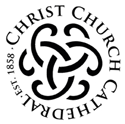Into Greater Silence
~Fr. Michael
The Hebrew word “Selah” has no direct English translation. It is often completely omitted from English translations. It occurs mostly in our Bible in the Book of Psalms, which we know was a worship book used in the Jerusalem Temple and Jewish Synagogues of Jesus’ time and beyond. It is likely that it is a liturgical and musical instruction, akin to our modern ‘rubrics’ that means something like “Stop and listen.”
Every now and again, some minister somewhere makes a suggestion about how we approach our worship that seems to catch fire. Maybe a congregation has tried a new kind of music and everyone likes it, and it catches on in neighboring churches too; maybe a minister has the congregation participate in a new way and after a few tries it becomes a really positive experience so they work spread the idea around. There are lots of examples of this: fifty years ago, nobody passed the Peace at church, Ashes to Go has become a multidenominational and international approach to Ash Wednesday, Cursillo and its various offshoots have spread throughout the church, the Great Vigil of Easter has been given much greater prominence in recent years in the Episcopal Church. The liturgy grows and changes as the church grows and changes, and as Anglicans and Episcopalians, we are aware of that, we have gotten used to that reality and have made space for it with a Book of Common Prayer that has evolved with us over the centuries.
Some liturgical innovations have potential for lasting a long time in the church, some of them have short life spans; some of them are universally well received, and some are controversial. These days, many things are presented as novel approaches to the way we worship are just re-introductions of things that the church has done in some other time or some other place. Jesus speaks in Matthew’s Gospel that “…every scribe trained for the Kingdom of Heaven is like the master of a house who brings out of his treasury things old and things new.” So both imaginative innovation and historical exploration provide a good balance for guiding us how to try out new ways of praying and worshipping together.
One such liturgical idea that seems to have caught fire around the church recently has done so quietly: increasing our time for silent prayer in our common worship. It might not be something that pops up in casual conversation among worshippers, but there is a groundswell of advice and earnest pleading from theologians, liturgical scholars, monastics, mystics, and seasoned pastors alike, that there is a need to offer more silent chances for prayer in worship. At last year’s clergy retreat, we heard a long reflection from Bishop Neil Alexander about increasing silence; there was a moving presentation at the Dean’s conference the year before about the importance of a pause for silence throughout our more verbal praying; monasteries are attracting many more guests than in previous years as people are attracted to the devoted silence that such spaces offer. Our Monday morning group at the cathedral just completed a study of Inwardly Digest: the Book of Common Prayer as a guide to Spiritual Life, where Fr. Derek Olsen laid out a provocative case for maintaining significant pauses in worship. In short, the message seems to be coming from all sides.
There are several places in our regular Eucharistic worship where silence is suggested by the rubrics, and one place where it is ordered: after scripture readings, after bidding prayers during the Prayers of the People, after being bidden to confession, and at the Breaking of the Bread, which is not listed as optional. These are particular moments for reflection that are suggested by our liturgy, and I have heard suggestions from some of you that we do not make enough of the moments of silence. In addition to the points listed in the BCP, there are increasing calls for a period of silent prayer after being bidden to pray and the reciting of the Collect at the start of the service. The argument goes that the original purpose of collects (which literally means “read together”) was to focus and direct and formalize all of the community’s conversations with God that had been filling the silence beforehand; and that to elide that silence is to effectively shut people up when they should be talking to God.
So, having absorbed all that, I would like to propose an experiment for our common worship together, that we make more spaces for silence. There might be a tendency to see pauses in our worship as problems: maybe it feels like the pacing is off; maybe you’re worried that someone lost their place or is having a mental lapse. But I’d like to ask for everyone to be patient with the experiment long enough to see how the experience of some silence feels. The hope is that, rather than being distracted by the silence and having your mind wander to other thoughts like to-do lists or petty details, we can all use the time to slow down, take a breath, and open up ourselves to the presence of God, and the possibility of communication with God. As the Psalmist charges us: Selah—stop and listen.

